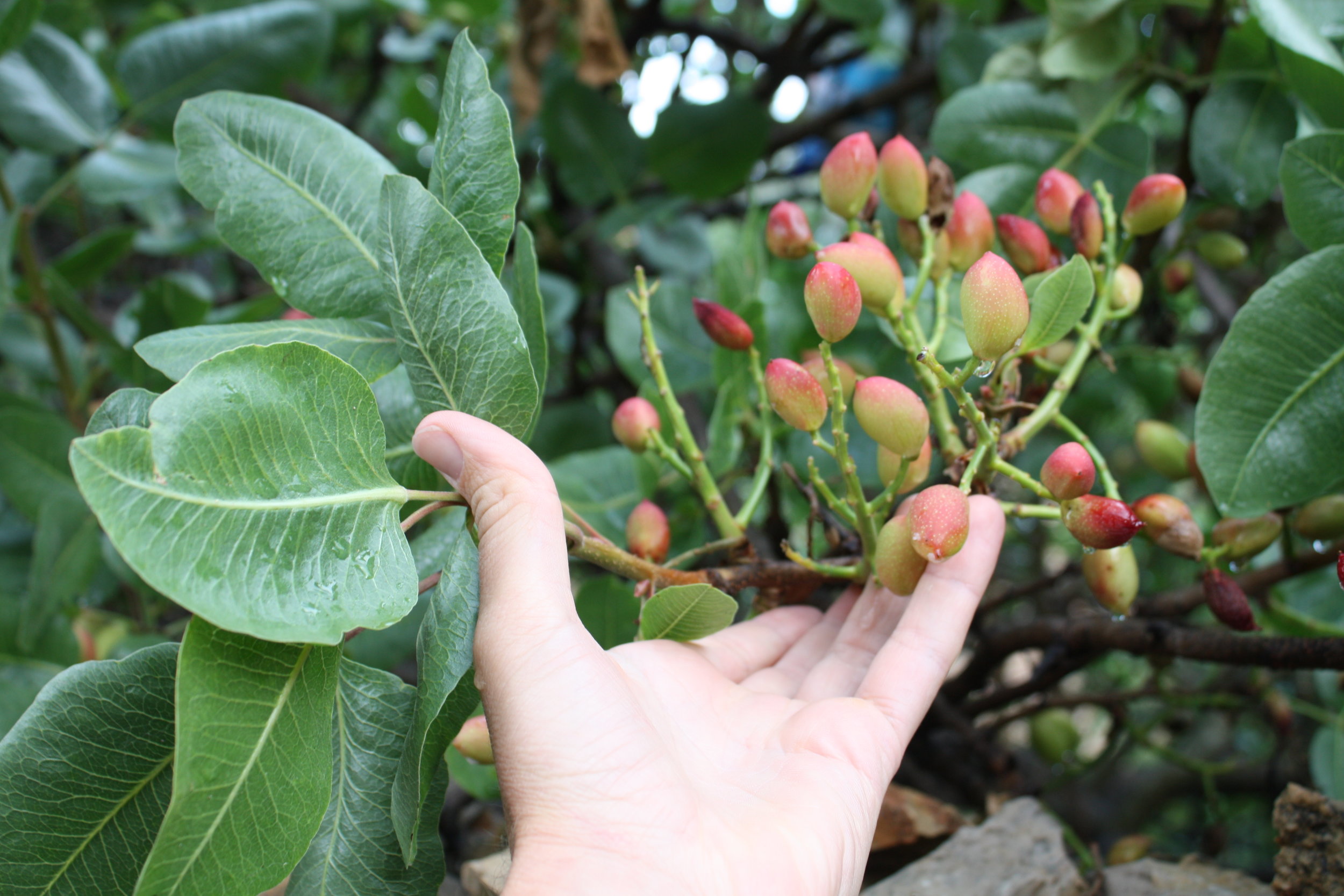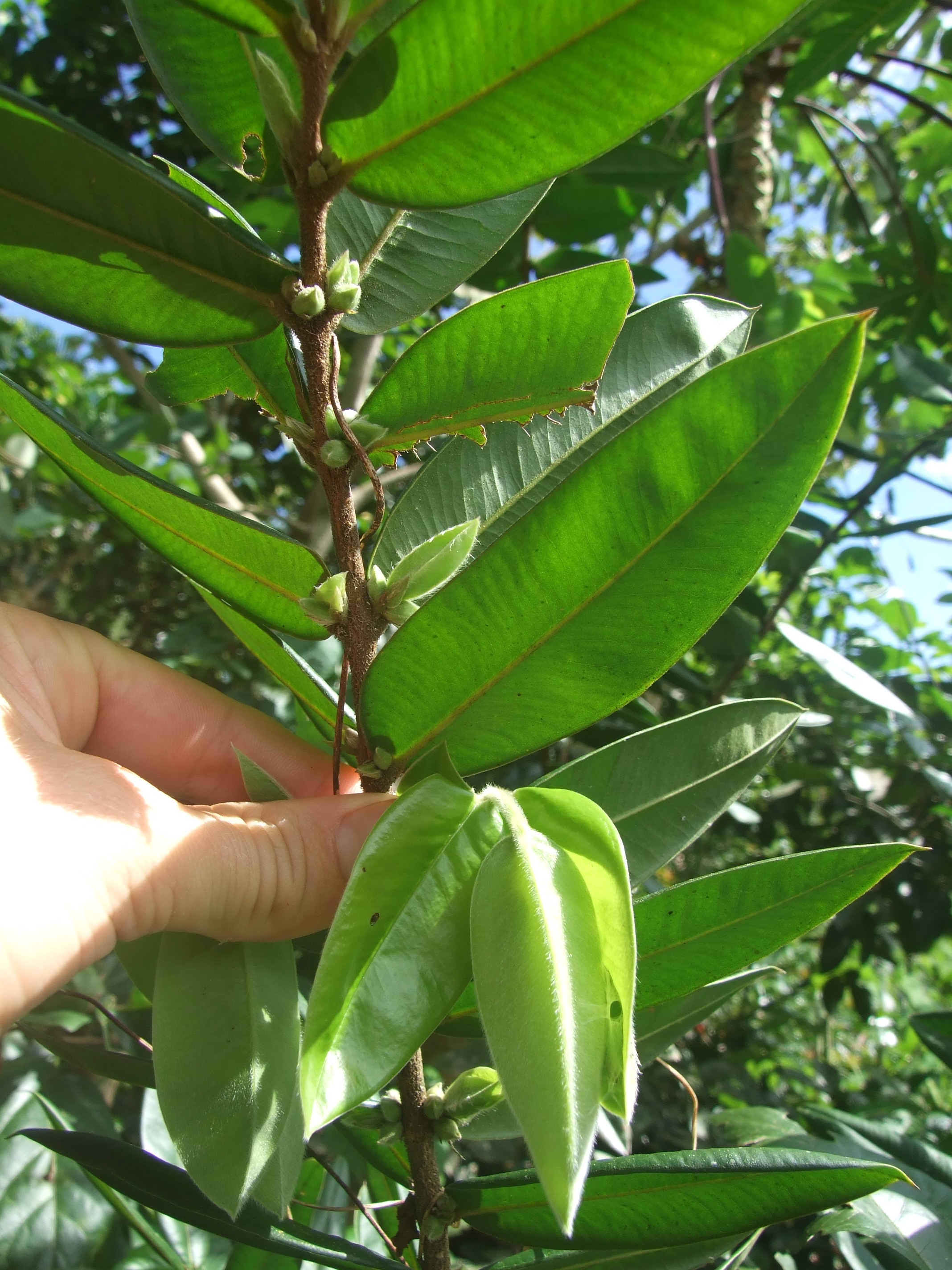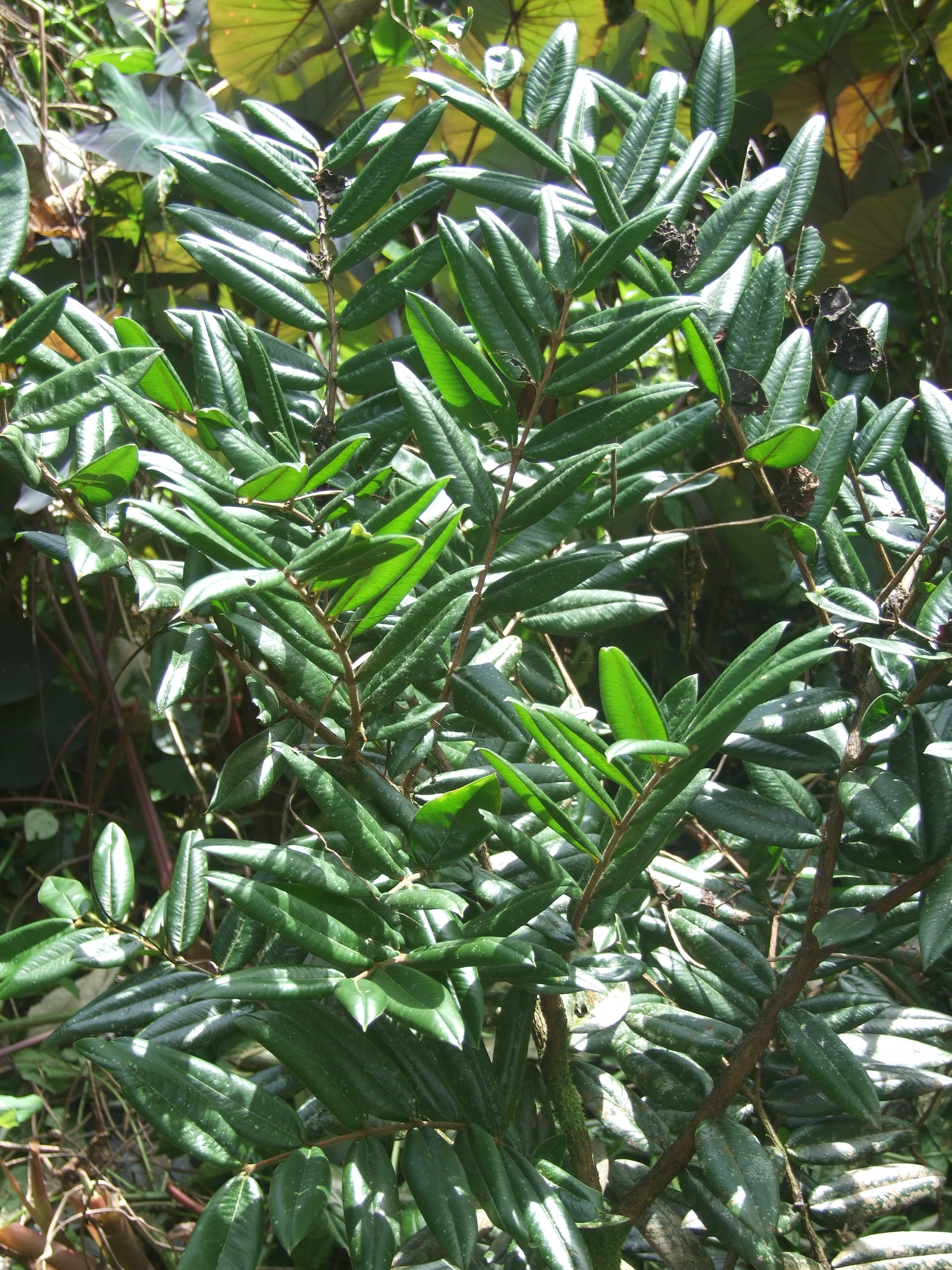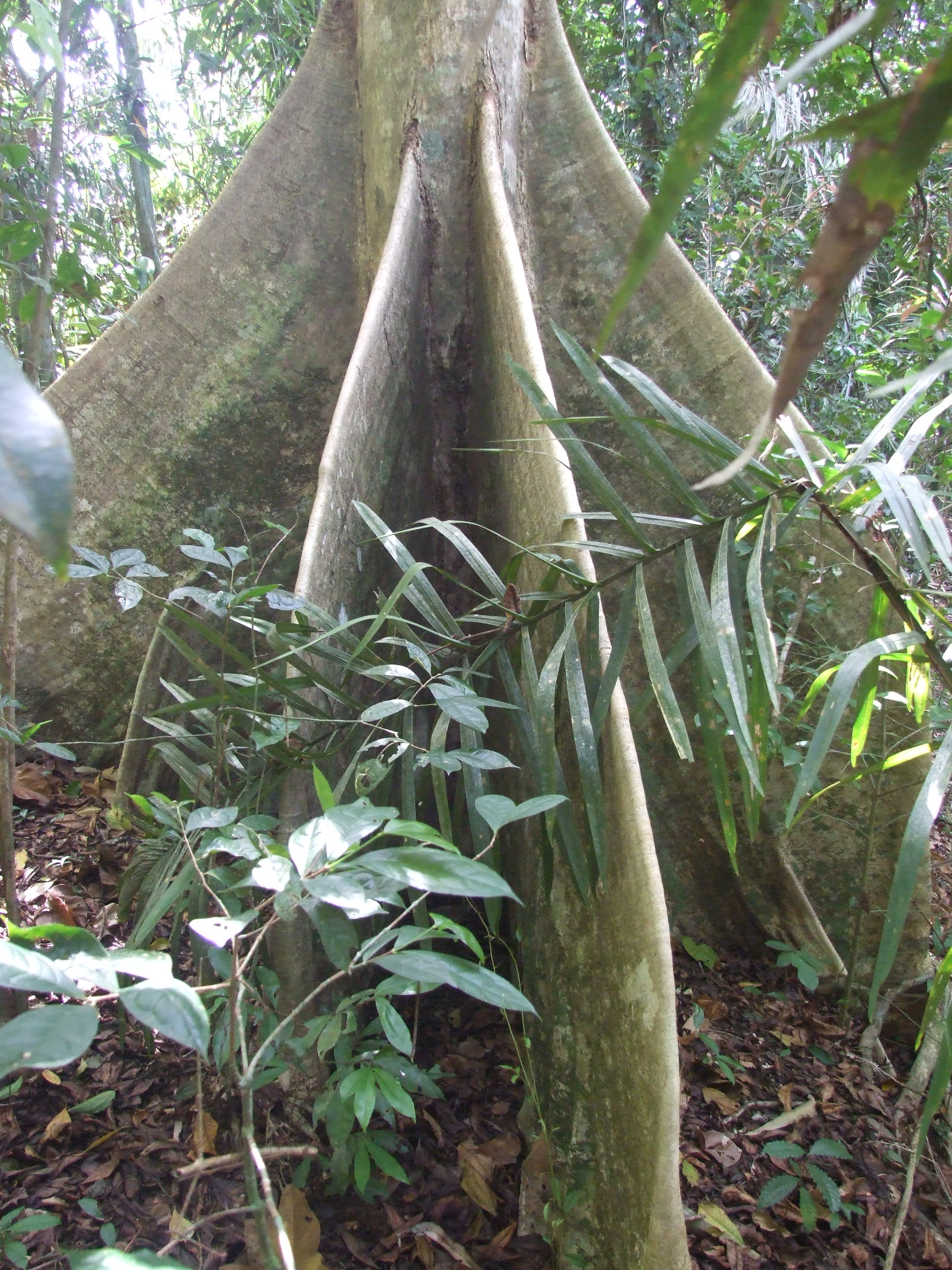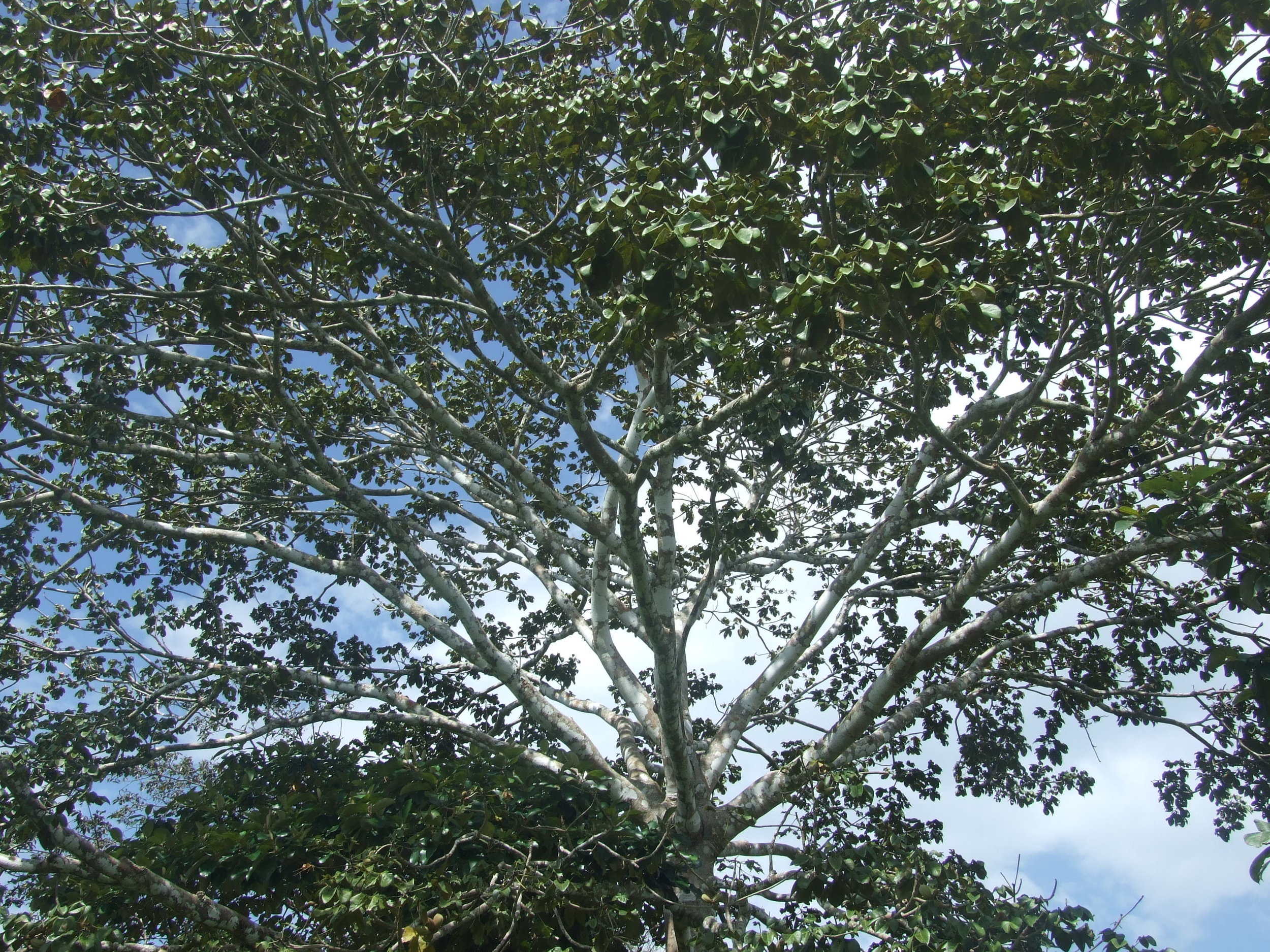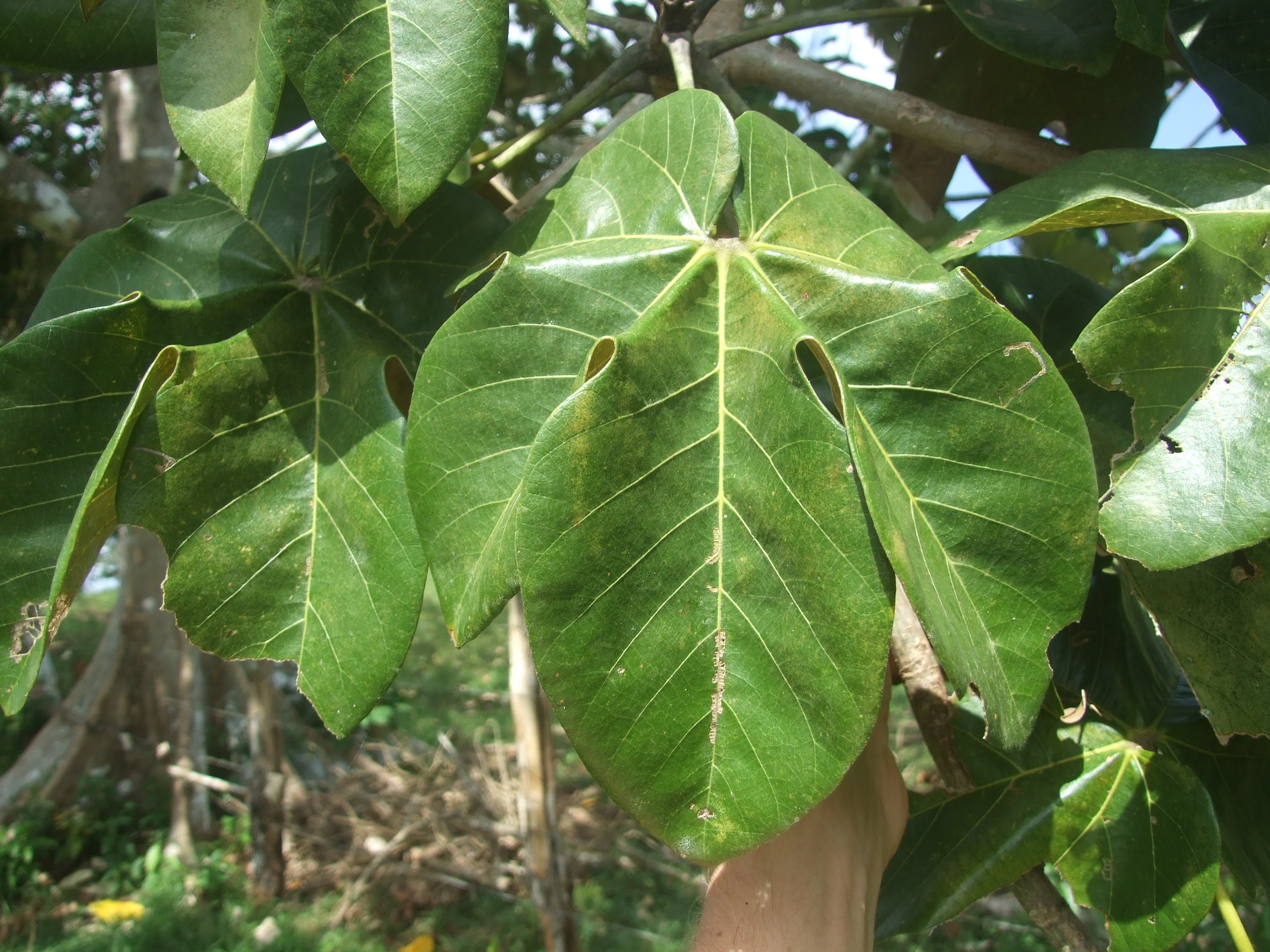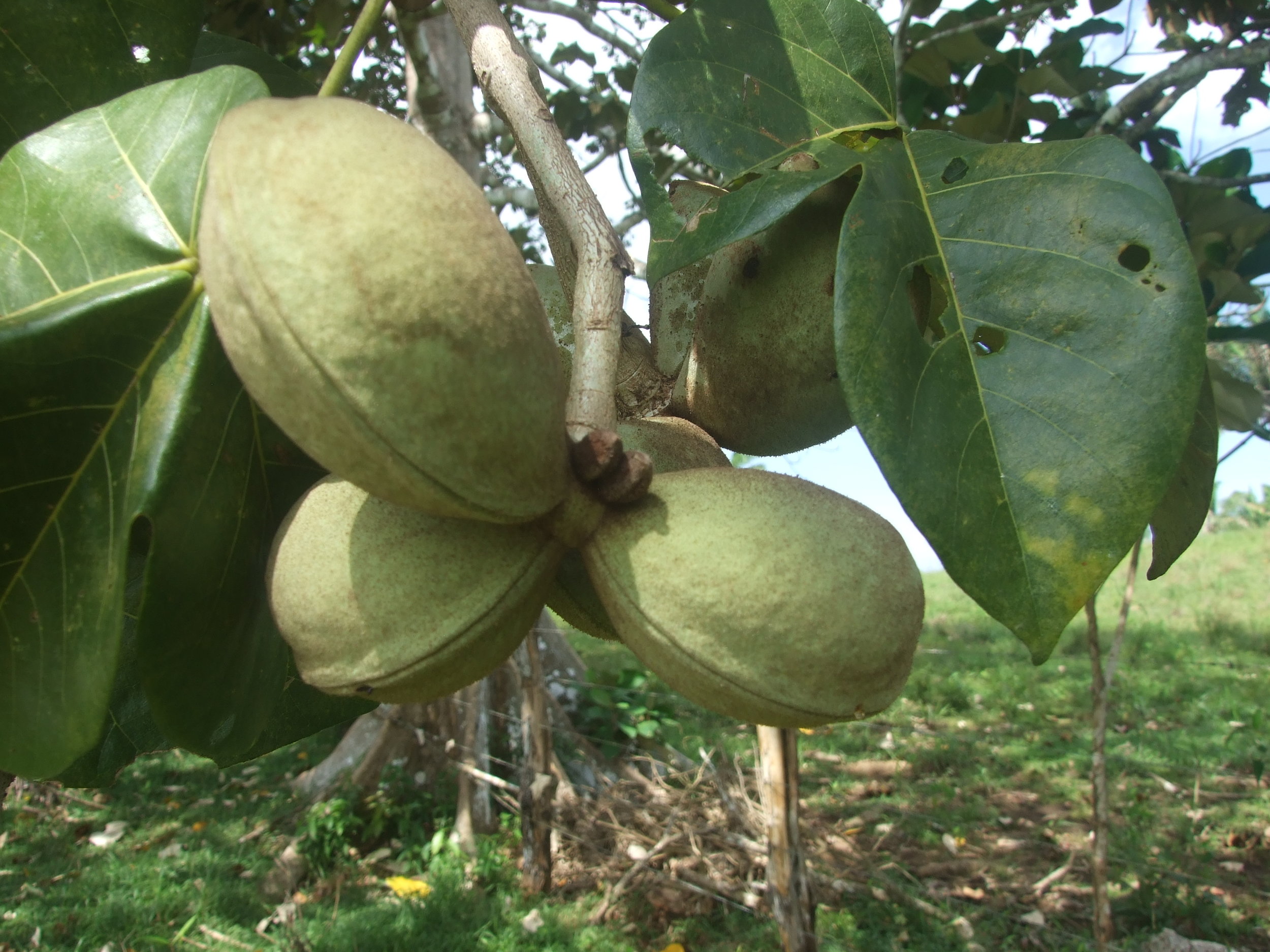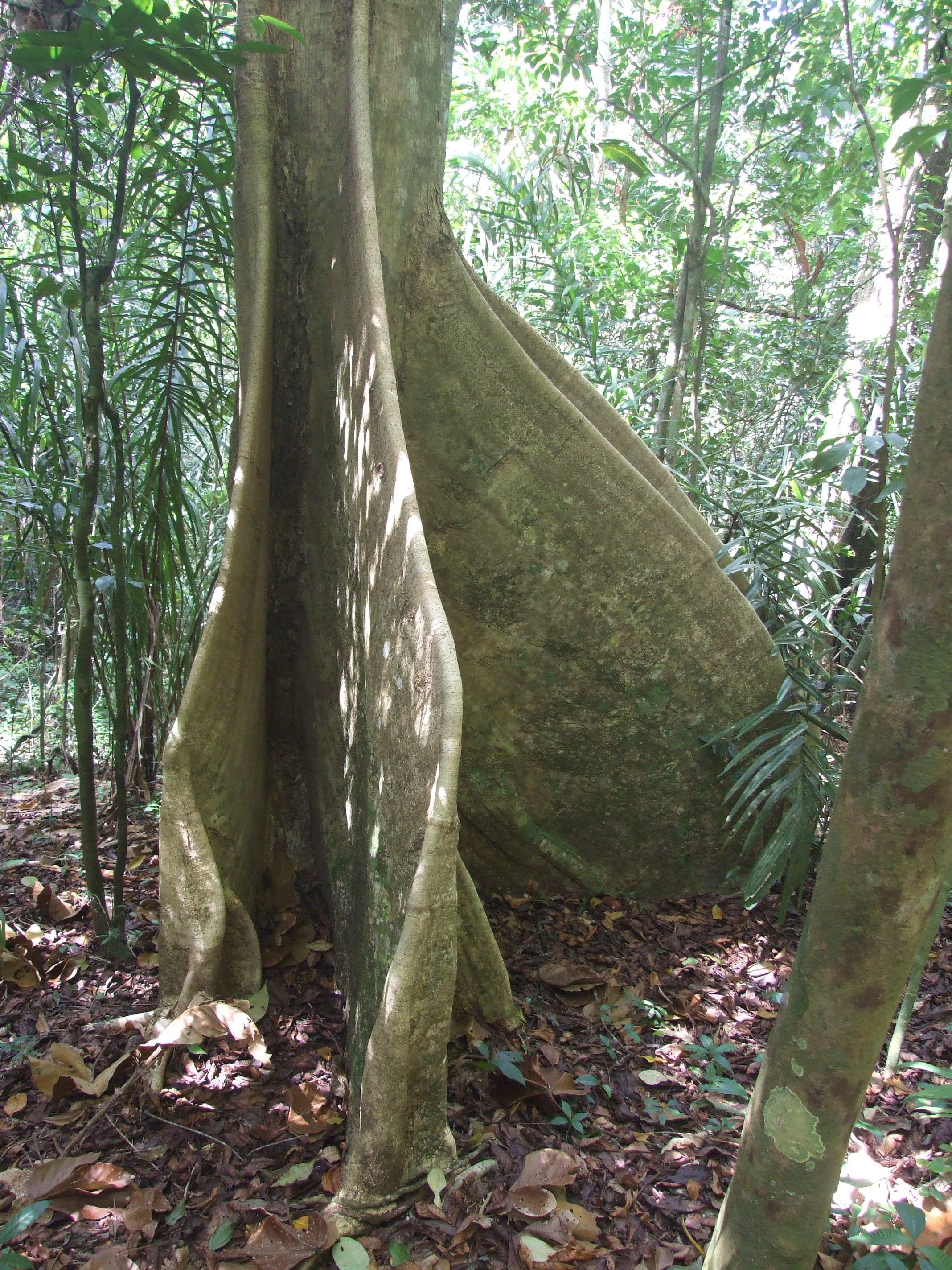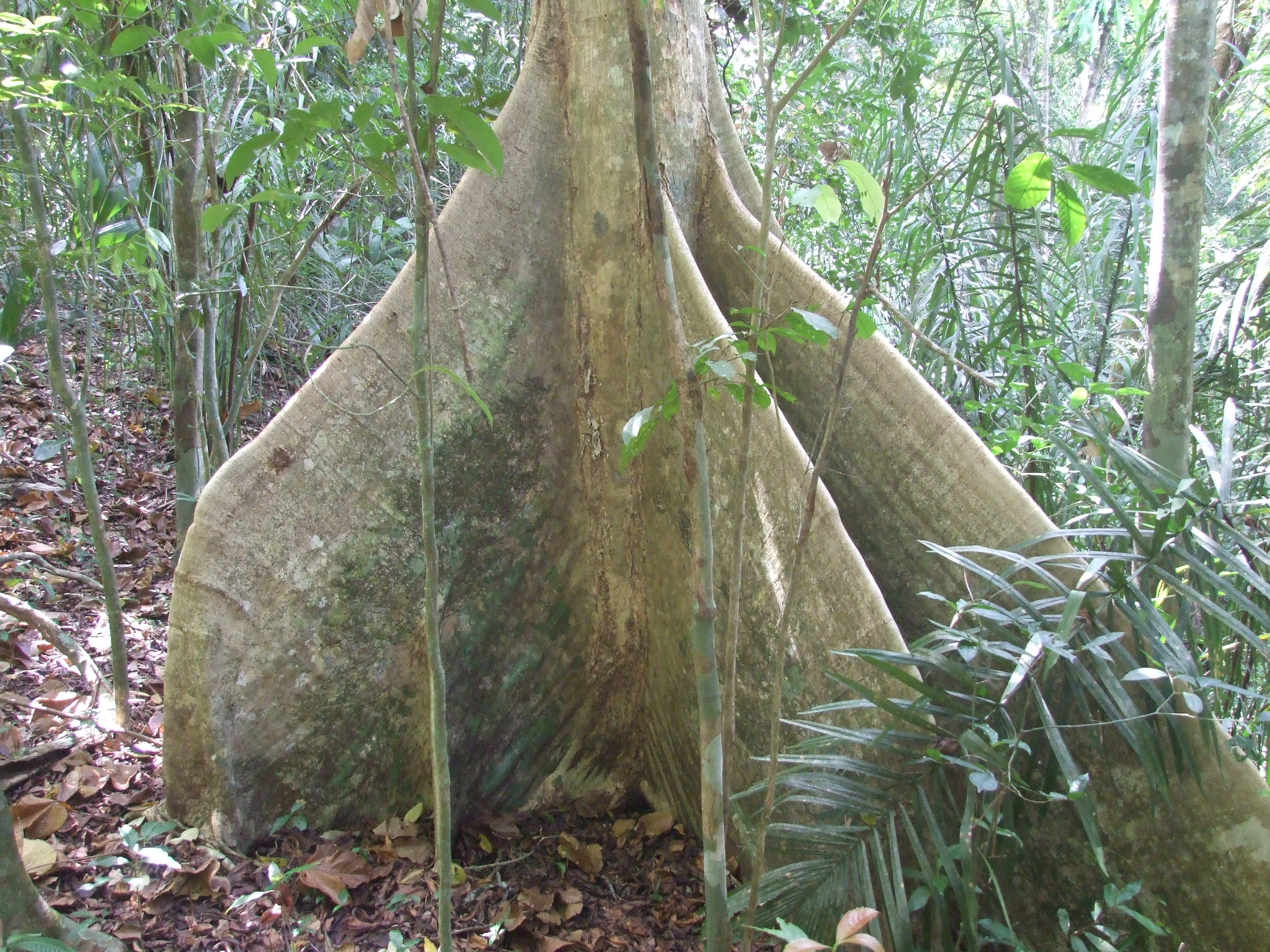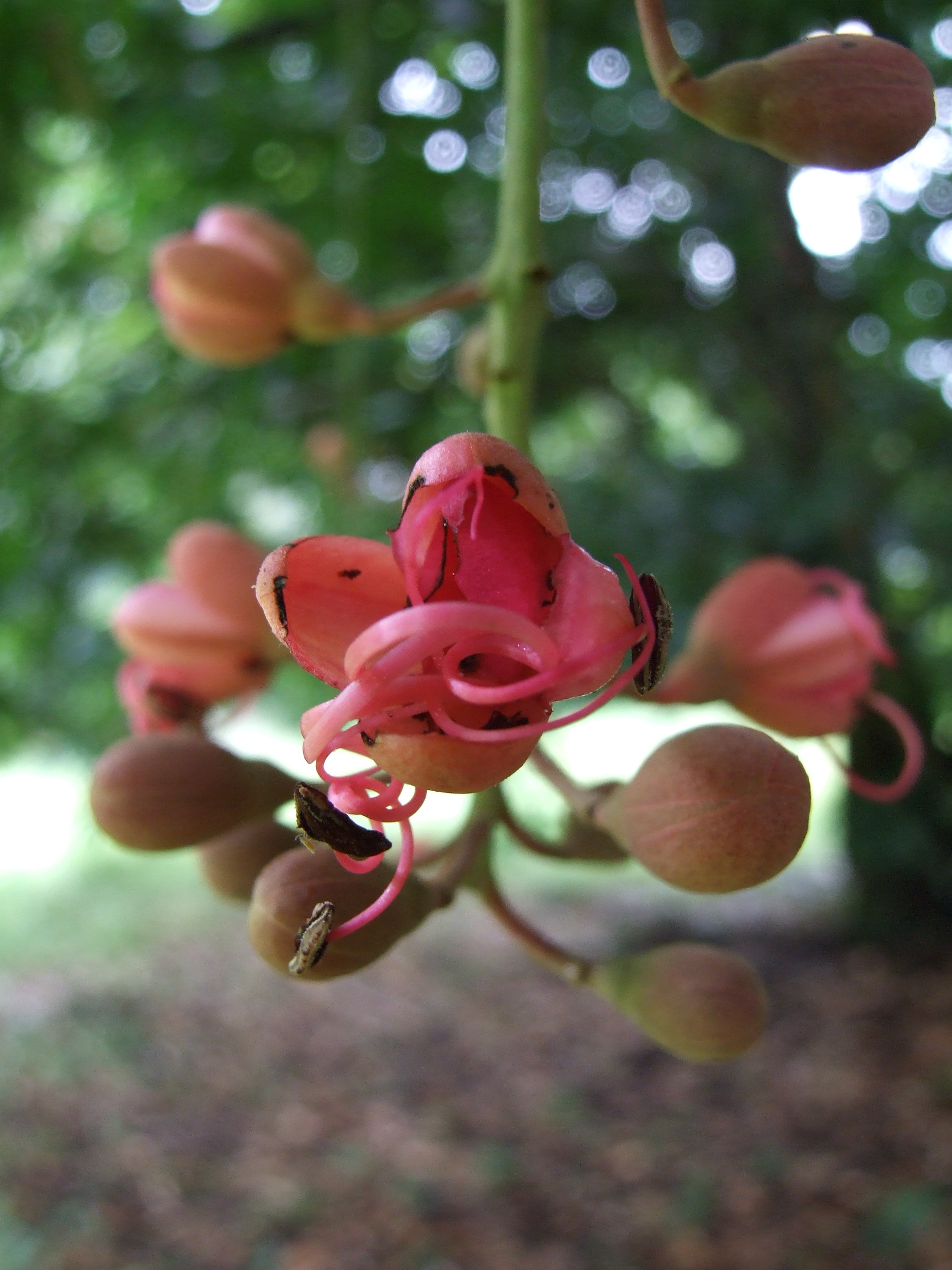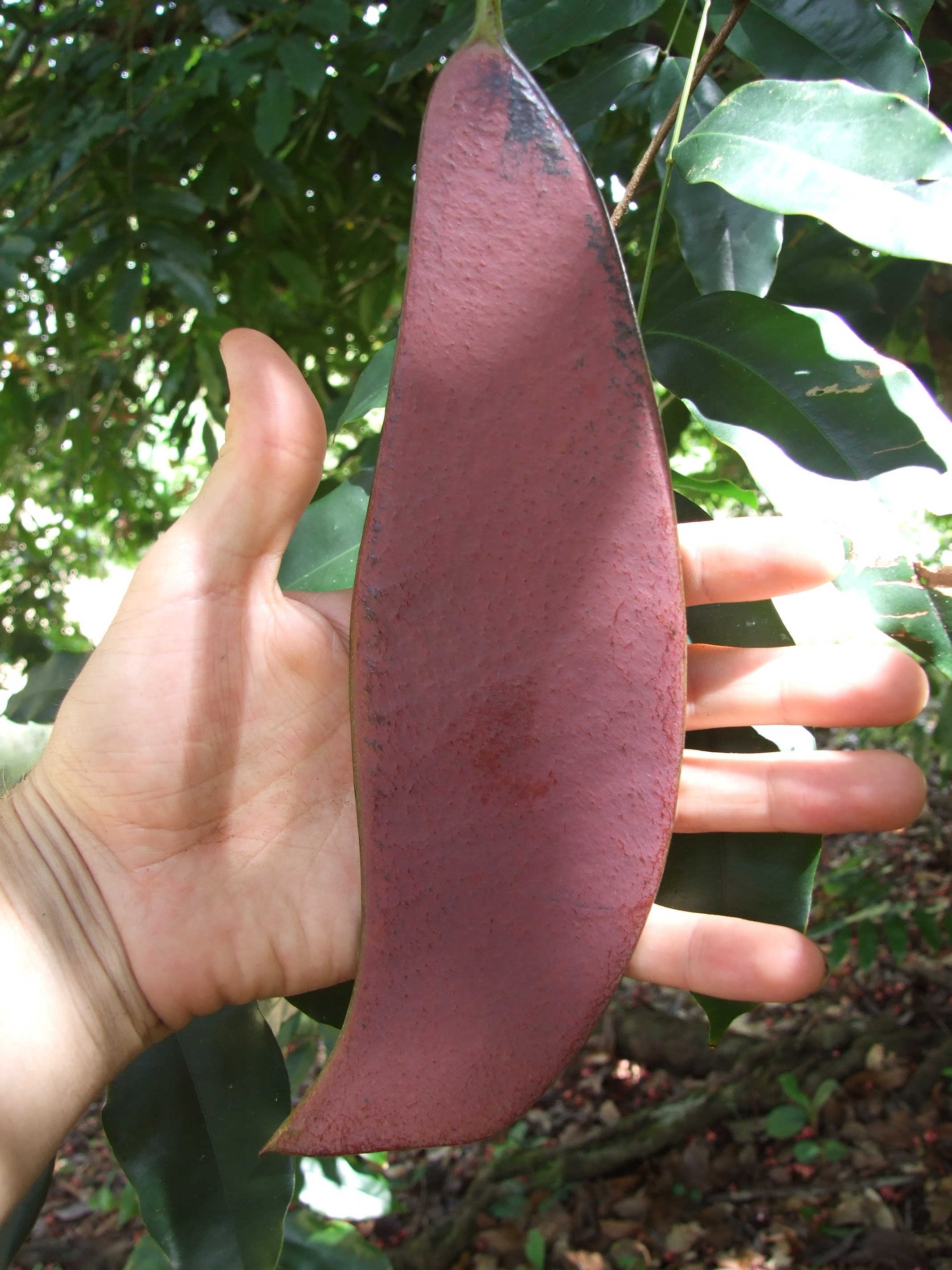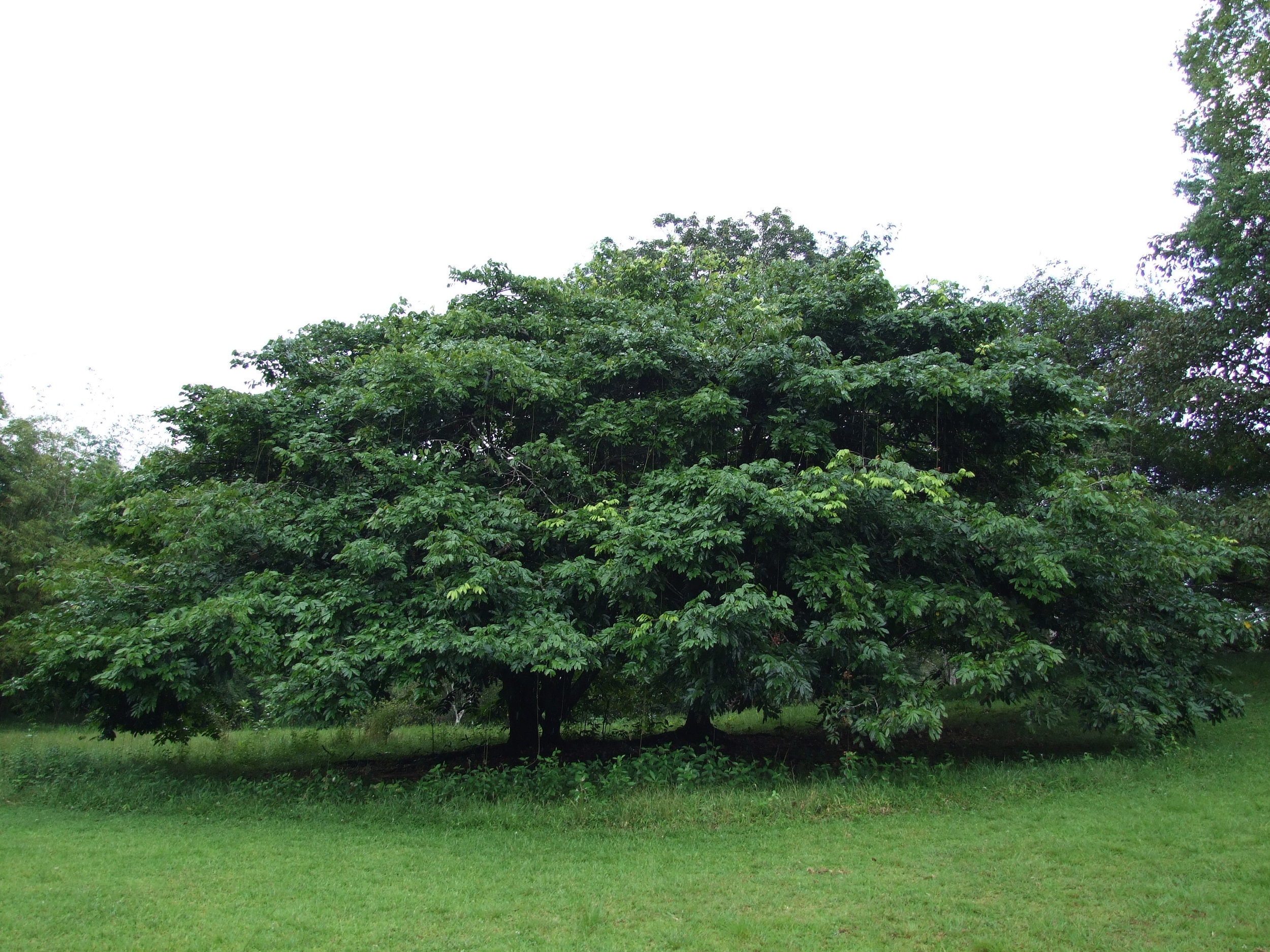Jujube is one of the five primary fruits in China, having been cultivated thereabouts for 4,000 some odd years, probably longer. The fruit is very common in parts of Asia, and increasingly so in the Medeterranian. The tree is best adapted to dry tropical climates and can be found throughout the tropics, although it is not very common outside of Asia.
The tree can reach 12 meters in height, although most of the ones I've encountered, propagated by approach grafting, are smaller, sprawling shrubs. In dry, colder areas the tree doesn't typically surpass 4 meters in height.
The Indian Jujube (Z. mauritania) and the Chinese Jujube (Z. jujuba) can be distinguished by the underside of the leaves. The underside of the Indian jujube leaves is covered with an almost cream colored fuzz. The fruit is usually the shape and size of a olive, although improved Chinese varieties can be larger than 6 cm in length. Each fruit contains a stone with two seeds.
The Jujube can be consumed in numerous ways: ripe or unripe, cooked, in sweets and jams, breads, cheeses, and a butter is prepared with the pulp. Juices are also made. In order to dry the fruits, one must wait until the process is initiated on the tree, the fruit ripens, becomes soft and then dries. The soft fruit has a higher concentration of sugars. Dried fruits are common, and can be conserved and consumed like raisins.
The wood is very strong, often used to make agricultural implements, also used to make a top quality charcol. The tree is commonly used as a living fence and windbreak in arid regions. Leaves are used as food for silkworms. The bark is used for tanning. The leaves and fruit are an excellent animal forage.
There are numerous superior grafted varieties of Chinese Jujube, including Lang, Li, Sui Men, Mu Shing hong, and Yu. There are over 125 known varieties of Indian Jujube in India, including "Gola", "Safeda", "Banarsi", and "Haichi".
High quality fruits contain up to 21% sugar, 1.5% protein, and are rich in calcium, fosforo and vitamin C.
The trees can be propagated by seed, approach grafting, cuttings and air layer.

